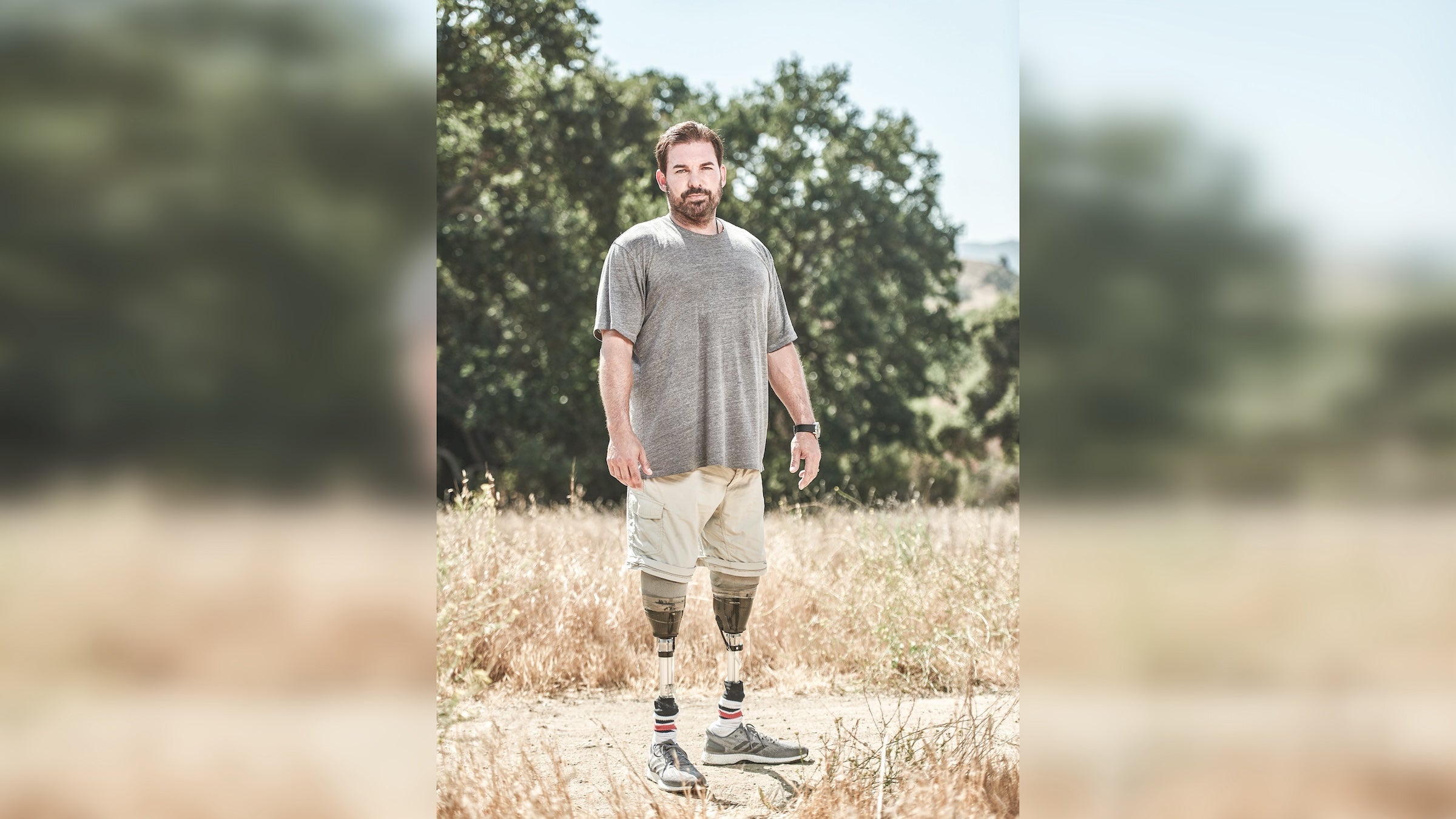Frostbitten and Stranded

(Photo: Eric LeMarque)
“Why don’t you just meet me down the hill? I think I’m going to ride down,” I told the dumbfounded National Guard medic.
He had rappelled from a helicopter to save me. My body temperature, he’d just told me, was 86°F. That I even had a pulse was remarkable considering I’d been wandering in the snow for the last seven nights. One foot was naked, and the other was frozen in its boot. But somehow, all I could think about was snowboarding.
I’d been riding at Mammoth Mountain Ski Resort when ski patrol started ushering people down. I ignored them, sure I’d be able to get in another run before the storm hit, and hiked out of bounds and into the backcountry in search of powder. Then the fog rolled in. Before long, I was hopelessly turned around. I wandered, on foot and via snowboard, all day and night, and eventually found a river, but I slipped at the edge and fell into the icy water. Soaked and freezing, I hauled myself out and walked 9 miles through deep snow over the course of a week, chewing on pine seeds and bark to stay alive. When I peeled off my socks on day three, I found strips of my own flesh clinging to them. Starved and exhausted, I ate that, too. By the time rescuers found me, I was critically hypothermic—and delirious.
Rational thinking only returned later, in the hospital. By then, both my feet had been amputated. Sit with that fact in a small, white room, and it’s impossible to avoid digging back into your memory and picking apart the experience that got you there. I wanted to avoid thinking about all of it—the cold, the fear, the arrogance that had led me to ignore ski patrol’s warnings—but that luxury stopped the minute I looked at the other end of the bed and found it empty.
My feet had been my livelihood. They’d taken me to the NHL and the Olympics as a hockey player. As a snowboarder, it was my feet that had conveyed those sensations of gliding and floating. What had I done to end up here without them? And what was I going to do now?
I was disappointed in myself, angry that I had so blatantly ignored my own safety for the thrill of another run. But it wasn’t just one bad decision that led me to that hospital—it was a long line of them. When my hockey career ended, I’d filled the void with snowboarding—and with drugs. The day I’d gotten lost, I was waiting for a court date for trespassing and drug possession, and I had a bag of meth in my pocket. In some ways, I’d been headed for disaster for a while. But I had to remind myself: I’d gotten lucky. I should have been dead, but I wasn’t.
So as I bounced from hospital to hospital, I was both upset and thrilled with my situation. With some help from experts and my parents, I learned to focus on what I could still do: turn my life around.
The first step was humility. I’d been an elite athlete for so long, it was hard to start at the very beginning. I had to learn to walk with the prosthetics. I needed help at every turn. But I realized that asking for that support was the first step toward finally growing up.
I met with counselors and support groups, battled withdrawal, and stopped doing drugs. I learned to play hockey again, took a humbling entry-level tech job, and eventually got back to snowboarding. That last effort was about more than just picking up my old hobby. It was proving to myself—the athlete—that I was still the same person, that I could redefine my future without losing my past.